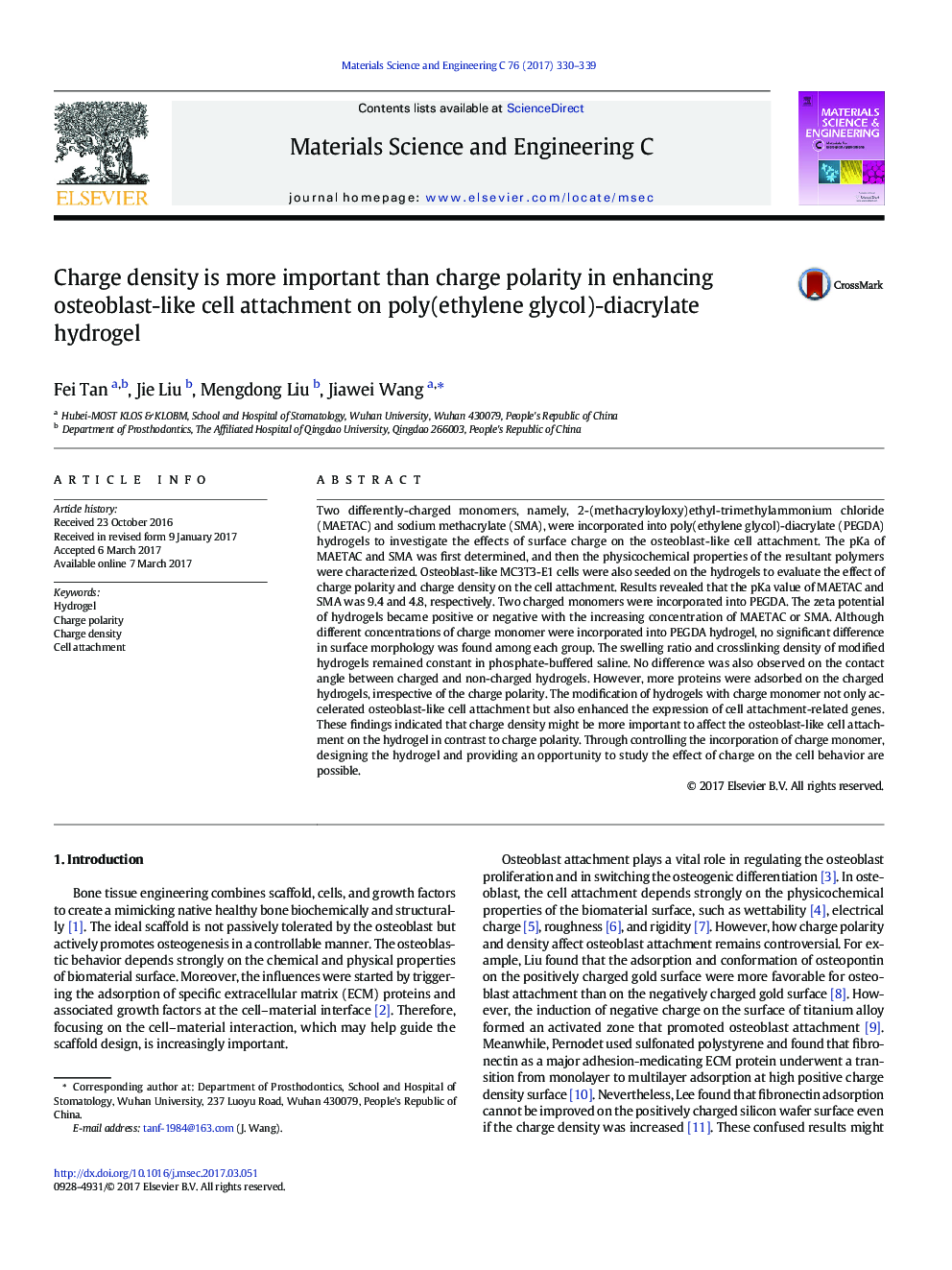| Article ID | Journal | Published Year | Pages | File Type |
|---|---|---|---|---|
| 5435124 | Materials Science and Engineering: C | 2017 | 10 Pages |
â¢The charged hydrogels were fabricated by incorporating charged monomers.â¢The osteoblast cell attachment was improved on the charged hydrogel.â¢Charge density but polarity is more important to enhance osteoblast cells attachment.â¢The modified hydrogel was an effective method to study cell-material interaction.
Two differently-charged monomers, namely, 2-(methacryloyloxy)ethyl-trimethylammonium chloride (MAETAC) and sodium methacrylate (SMA), were incorporated into poly(ethylene glycol)-diacrylate (PEGDA) hydrogels to investigate the effects of surface charge on the osteoblast-like cell attachment. The pKa of MAETAC and SMA was first determined, and then the physicochemical properties of the resultant polymers were characterized. Osteoblast-like MC3T3-E1 cells were also seeded on the hydrogels to evaluate the effect of charge polarity and charge density on the cell attachment. Results revealed that the pKa value of MAETAC and SMA was 9.4 and 4.8, respectively. Two charged monomers were incorporated into PEGDA. The zeta potential of hydrogels became positive or negative with the increasing concentration of MAETAC or SMA. Although different concentrations of charge monomer were incorporated into PEGDA hydrogel, no significant difference in surface morphology was found among each group. The swelling ratio and crosslinking density of modified hydrogels remained constant in phosphate-buffered saline. No difference was also observed on the contact angle between charged and non-charged hydrogels. However, more proteins were adsorbed on the charged hydrogels, irrespective of the charge polarity. The modification of hydrogels with charge monomer not only accelerated osteoblast-like cell attachment but also enhanced the expression of cell attachment-related genes. These findings indicated that charge density might be more important to affect the osteoblast-like cell attachment on the hydrogel in contrast to charge polarity. Through controlling the incorporation of charge monomer, designing the hydrogel and providing an opportunity to study the effect of charge on the cell behavior are possible.
